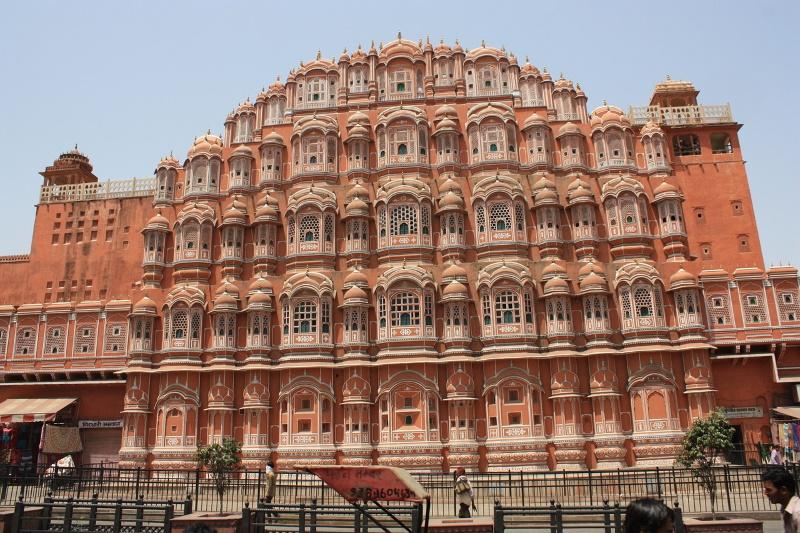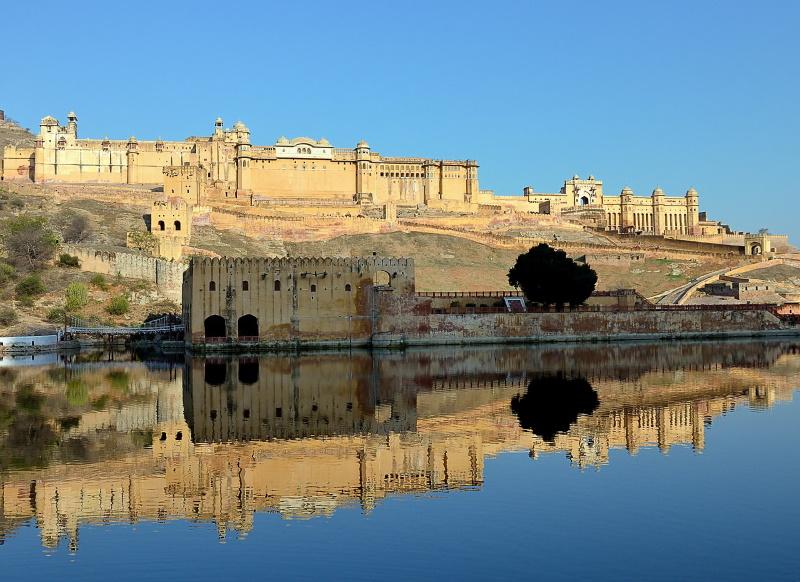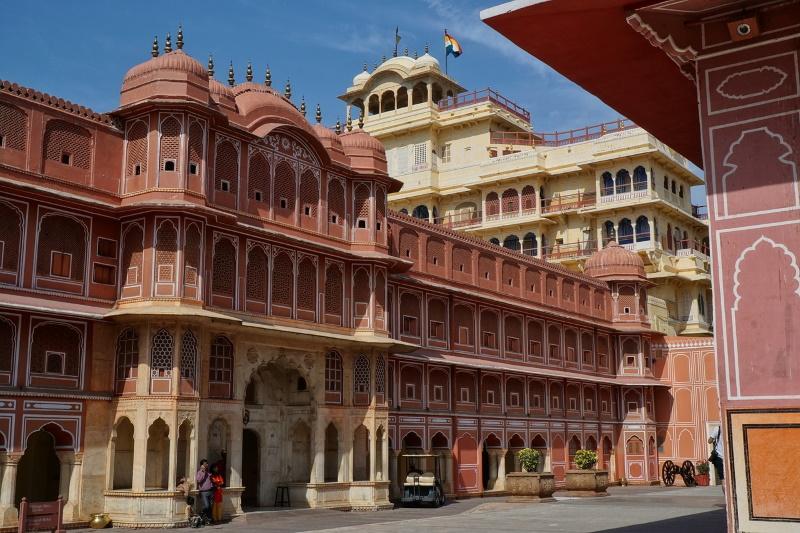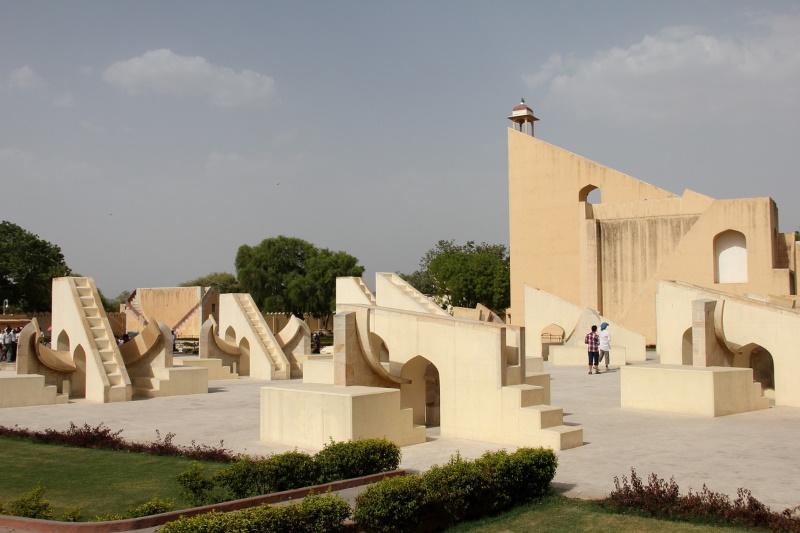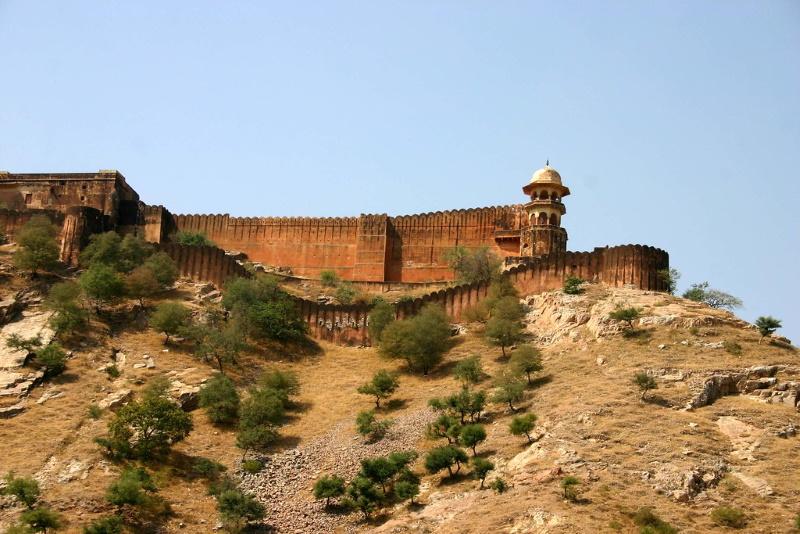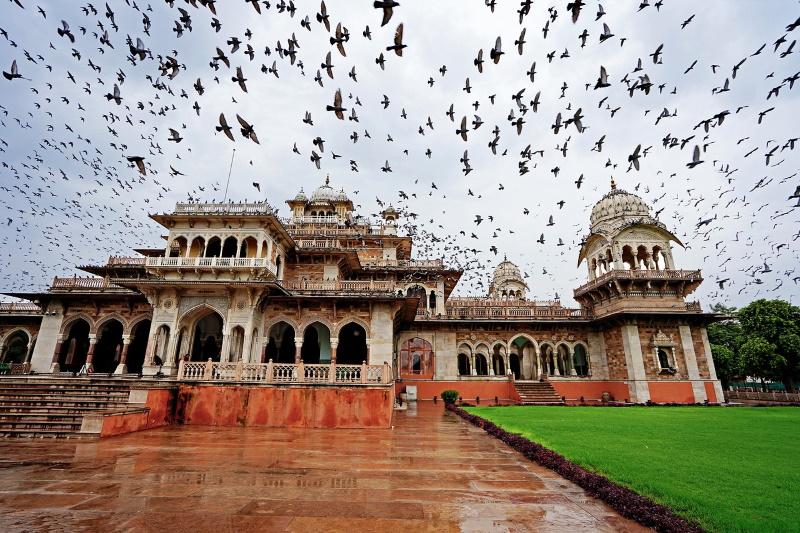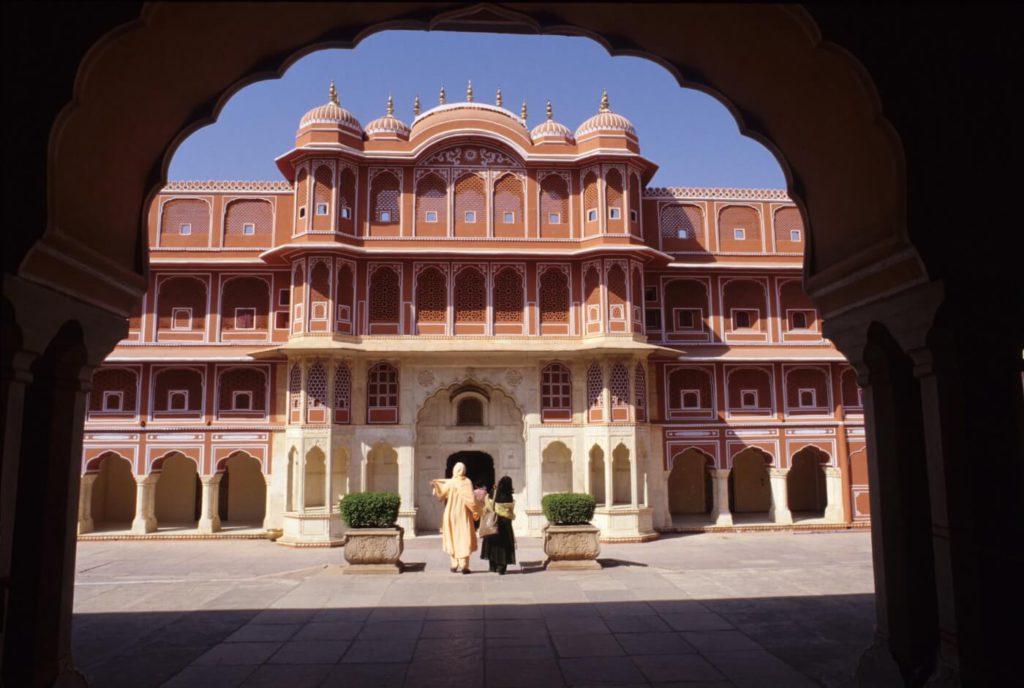
The pink-red buildings give The Pink City an exotic touch, especially if you walk through the city just after sunset. It makes Jaipur a popular stop in the 'Golden Triangle' in northern India, which also includes Agra and the capital Delhi. Jaipur is a royal desert city with plenty to do, with its stunning relics from a bygone era.
You can visit the many forts, palaces and temples that evoke a fairytale atmosphere, even if they could sometimes use a lick of paint. You can wander the streets and bazaars of the walled old city, which was founded in 1727. For adventure, you can arrange a balloon ride or desert safari in Jaipur. Take your time to explore this colourful city and don't be fooled by the many pushy males targeting tourists. Here are 10 tips on what to do and see in Jaipur!
Hawa Mahal - Palace of the Wind
The pink-coloured Hawa Mahal, literally the Palace of the Wind, is probably the most famous and most photographed building in Jaipur. The iconic monument stands out for its wondrous five-storey façade with 953 tiny windows, making it look like a honeycomb of a beehive. This is also the tallest building in the world without a foundation.
Hawa Mahal was built of pink sandstone in 1799 by the poet king Sawai Pratap Singh as a summer residence for him and his family. However, behind the windows were also the women of his harem. Thus, they could peep at the lively main street of old Jaipur without being seen themselves. A cooling breeze flowed through the open windows, giving the palace its nickname. You can visit the Hawa Mahal and climb all the way to the top for stunning views.
Amber Fort
About 11 kilometres north of Jaipur is the 16th-century Amber Fort, which is so beautiful that even invaders didn't want to destroy it. The fort sits idyllically on a hill by a small lake and contains a series of breathtaking palaces, halls, gardens and temples. Construction of the fort began in 1592 and it was home to the Rajput rulers before the capital Jaipur was built.
The Amber Fort is built of pink and pale yellow sandstone and white marble, in a mixed style of Hindu and Mogul architecture. It is a large complex consisting of four buildings, each with its own courtyard. The palace is opulently decorated, with carvings, precious stones and mirrors. The so-called 'Hall of Mirrors' is a sought-after place to shoot Hindu films.
In the evening, there is a light and sound show that brings the history of the Amber Fort to life. The monument has been a UNESCO World Heritage Site since 2013. Buses leave from Ajmeri Gate and MI Road in Jaipur and take about 40 minutes.
City Palace
The City Palace(City Palace) has been the residence of Jaipur's royal family since 1727 and, like many other palaces, is built of pink and pale yellow sandstone. The descendants of the royal family still seem to live in a private part of the palace. It is a large complex with two main palaces, temples and gardens. The City Palace is now largely a museum, where you can admire royal costumes, ancient Indian weapons, delicate Kashmiri shawls and paintings, among other things. Website: www.royaljaipur.in
Jantar Mantar
Next to the City Palace is Jantar Mantar, the largest astronomical observatory in the world. It was built between 1727 and 1734 by maharaja Sawai Jai Singh II, the founder of the city of Jaipur. Jantar Mantar, which literally means 'calculating instrument', consists of a remarkable collection of stone measuring instruments that were used to calculate time and determine the position of celestial bodies. Among other things, you can see the largest stone sundial in the world here. A UNESCO World Heritage Site, Jantar Mantar attracts mathematicians, astronomers, historians and geographers besides tourists.
Jaigarh Fort
Located not far from Amber Fort, the massive Jaigarh Fort was built in 1726 to protect this palace. There are even a number of underground tunnels running between the two forts, which have recently been restored and can also be visited. So Jaigarh Fort really does look like a military fortress, with watchtowers, towering gates, battlements and the world's largest cannon on wheels(called Jaivana ). The cannon was never used and the fort was never conquered, making it one of the best-preserved medieval buildings in all of India. There is an observation tower where you get a fine view of the surrounding plains and rocky hills.
Albert Hall Museum
The Albert Hall Museum is Jaipur's main museum and is actually considered the'Empire Museum' of Rajasthan. The museum opened back in 1887 and the design of the neo-Gothic building was inspired by the famous Victoria & Albert Museum in London. The museum has a rich collection of artefacts, including paintings, jewellery, carpets, ivory, stone, wood carvings, metal sculptures and works of crystal. The highlight of the collection is an Egyptian mummy. Website: www.alberthalljaipur.gov.in
Nahargarh Fort
The Nahargarh Fort is the city's third largest defensive structure, built in 1734 to protect Jaipur from enemies. Within its walls is a palace, Madhavendra Bhawan, which was in use by maharaja Sawai Madho Singh. He was the ruler of Jaipur from 1750 to 1768. He had 12 identical suites built for his queens. This way, he could visit a queen's suite without anyone else noticing. There are great views of Jaipur from the fort and a restaurant and wax museum. The Nahargarh Fort is located slightlyn northwest of the city centre.
Jal Mahal
One of the most beautiful sights around Jaipur is Jal Mahal, or the 'Water Palace'. The exotic-looking palace lies in the middle of Lake Man Sagar and seems to float on the water. The light sandstone walls and blue water create a beautiful contrast, especially when it is lit up at night. The palace was built around 1750 by maharaja Jai Singh II, but he mainly used it as a lodge for duck hunting. As water leaked inside, Jal Mahal was restored between 2001 and 2008. You cannot visit the palace, so activity is mostly limited to taking photos of the exterior. Jal Mahal is located 4 kilometres north of Jaipur, towards the Amber Fort.
Birla Temple
Dominating Jaipur's southern skyline, Birla Temple is built entirely of white marble, which provides an enchanting glow at night. The remarkable Hindu temple does not have a centuries-old history, but was built only in 1988 by India's Birla family. This family has become stone-rich with cement, aluminium, telecom and financial services, among others. The Birla's have had temples built all over India because they believe the country does not yet have enough of them. The temple in Jaipur is dedicated to the protective god Vishnu and his companion Lakshmi, the goddess of wealth and happiness.
Elefantastic
Taking rides on elephants is not done these days, but Elefantastic is different. This is a sanctuary for Asian elephants, established in 2012 to promote the welfare of these majestic creatures. At Elefantastic, you can wash, feed and water the elephants and learn more about medicine and disease control. Elephants have always been an inseparable part of Rajasthan's culture, so there are a lot of fatties in the area, not all of which are treated equally. Located on the outskirts of the city, Elefantastic is a nice place if you want to do something different from visiting forts and palaces. Website: www.elefantastic.in
What to do in Jaipur: practical tips
Travelling to Jaipur
Jaipur is easily accessible from all major cities in northern India, both by train and bus. From the capital Delhi, a train runs to Jaipur several times a day, taking 5½ to 6 hours. The city also has its own airport, Jaipur International Airport (JAI), about 10 kilometres south of the city centre. There are flights to Jaipur from all major Indian cities.
Accommodation in Jaipur Book on tophotels.com
Jaipur has many places to stay, from backpacker guesthouses to luxury hotels with swimming pools. You'll get the best experience if you book an overnight stay in one of the so-called heritage hotels. These are often former palaces converted into hotels, with serene courtyards, verdant gardens and attentive staff. This is how you experience the city's regal history.
One famous spot is the Diggi Palace Hotel (Hotes in Chennai at hotelsintamilnadu.com), built in 1860 for the princely Diggi family. The hotel offers you a royal experience with classically decorated rooms, well-tended lawns and a charming terrace draped with bougainvilleas. The hotel features a restaurant and outdoor swimming pool.
